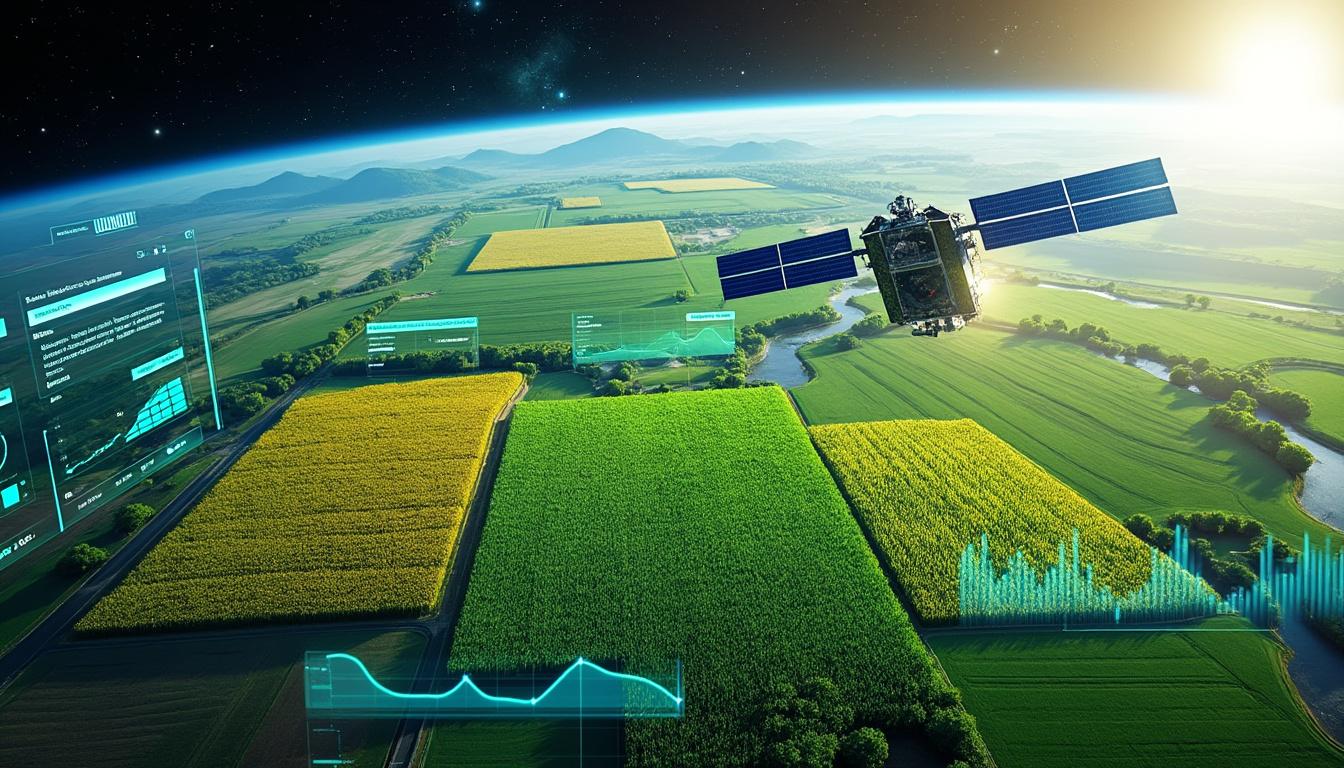In a world where agricultural challenges continue to grow, technological innovation plays a vital role in ensuring crop sustainability and efficiency. Satellite monitoring has become a fundamental component for farmers, enabling detailed tracking of crop health across vast swathes of land. Thanks to advances in remote sensing, a new tool, Sentinel GreenReport Plus, has emerged, offering a public-service approach to analyzing and monitoring crop health on a national scale. This article delves into the features, benefits, and challenges of this technology while highlighting its potential impact on modern agriculture.
Introducing Sentinel GreenReport Plus and its Key Features
Developed by researchers at the University of Kansas with support from the KansasView and AmericaView programs, Sentinel GreenReport Plus incorporates high-resolution imagery from the European Space Agency’s Sentinel-2 mission. This web application provides valuable data on vegetation and crop health, allowing users to access up-to-date information on vegetation cover and climate anomalies.
How the Tool Works
The core of Sentinel GreenReport Plus is based on the use of the Normalized Difference Vegetation Index (NDVI), a recognized method for assessing plant health. Using this approach, the tool offers several key features:
- Greenness Map : Represents active plant biomass over a selected composite period.
- Difference Map 1 : Compares NDVI values with the previous composite period, illustrating recent changes in vegetation.
- Difference Map 2 : Analyzes differences compared to the same period last year to identify annual variations.
- Difference Map 3 : Compares current data with historical averages, providing contextual insight into trends.
| Features | Description |
|---|---|
| Free Access | Offers a public service for agricultural producers, researchers, and other users. |
| Climate Data Integration | Combines satellite imagery with climate datasets from the PRISM group. |
| Intuitive User Interface | Allows easy navigation, facilitating access to relevant information. |
This information system is accessible to all, encouraging the involvement of sector stakeholders in monitoring crop health.
Benefits for Farmers and Researchers
The Sentinel GreenReport Plus brings considerable added value to farmers and researchers by providing accurate and actionable data. For example, by enabling the analysis of water stress or disease detection, it becomes possible to respond quickly to critical situations.
Consider a scenario where a farmer observes a decline in the NDVI index on his cropland. With this tool, farmers can plan targeted interventions, such as additional irrigation or phytosanitary treatments, to optimize yields. Furthermore, the ability to compare crop health with past rainfall allows for a direct link between climate and crop health.
Applications of Satellite Monitoring in Modern Agriculture
Satellite monitoring technology offers broad prospects in the field of precision agriculture. The evidence provided by tools like Sentinel GreenReport Plus can significantly improve farmers’ decision-making. This also applies to tracking damage caused by natural disasters.
Crop Monitoring and Risk Management
The ability to monitor crops in real time is essential for managing agricultural risks. By integrating new digital tools such as AgroSat, CropWatch, FieldScan, and other similar systems, farmers can easily detect anomalies in their fields. Drought Impact Assessment: Allows farmers to see affected areas and assess the need for irrigation.Disease Data: Quickly identifies infected areas, facilitating an early and targeted response. Resource Optimization: Adjusts the use of agricultural inputs, reducing costs and minimizing environmental impact.Application Area Description Crop Management
- Real-time monitoring of plant health and adaptation of cultivation practices.Data Analysis
- Use of platforms such as SmartAgri for better data interpretation.Yield Forecasting
- Accurate yield estimates based on observed conditions. These applications reveal the importance of innovation in a sector that must continually adapt to current environmental and economic challenges. Thanks to tools like Sentinel GreenReport Plus, the future of agriculture appears more promising and sustainable.Comparison with other crop monitoring technologies
| Satellite monitoring technology stands out from other crop monitoring methods. Compared to traditional approaches, the use of satellite imagery and remote sensing systems offers unparalleled accuracy and information. Tools like TerraMonitor and Aerial Agriculture also make their contributions, but each has its own specificities. | Differences between the approaches |
|---|---|
| Comparing these technologies allows us to understand their respective strengths and limitations: | Satellite vs. drones |
| : Satellites provide a large-scale overview, while drones enable detailed field-level analysis. | Remote Sensing vs. Manual Monitoring : Remote sensing monitoring reduces the need for frequent field visits, making it less intrusive. Data Accuracy |
| : While traditional monitoring often relies on estimations, satellite imagery and climate data provide concrete, measurable data. | Technology |
Advantages
Disadvantages
Satellite Wide coverage, accurate data Sometimes limited resolution Drones Detailed view, flexible use
High cost, limited flight time
Manual monitoring
- Ease of access to specific informationTime and effort required, sampling bias
- These comparative elements highlight the value of integrating different technologies for comprehensive crop health monitoring. Solutions such as EcoSensing and SkyHarvest also complement this range of tools available to farmers.Challenges Associated with Using Satellite Monitoring Technology
- Although promising, satellite monitoring technology is not without its challenges. Several aspects must be considered to ensure its effectiveness and adoption by agricultural producers.Technical and Economic Limitations
| Users face certain limitations that can hinder the adoption of satellite monitoring tools: | Implementation Costs | : Farmers may be reluctant to invest in expensive technologies, especially if the benefits are not immediately apparent. |
|---|---|---|
| Data Complexity | : Interpreting satellite data requires a certain level of skill, which can pose a barrier for some users. | Technology Dependence |
| Overreliance on this technology can leave farmers vulnerable to system failures or errors. | Challenge | Description |
| Adoption Cost | Initial investment for the required monitoring technology. | Training Required |
Users must acquire data analysis skills. Access Difficulties Internet access and the necessary hardware can be a problem in some regions. These challenges highlight the importance of supporting the adoption of these technologies with adequate training programs and cost-reduction initiatives. Future Outlook for Satellite Monitoring in Agriculture
Finally, satellite monitoring technology is positioning itself as a key player in the agricultural world of tomorrow. With the rise of artificial intelligence and big data, the analysis of data collected by tools such as Sentinel GreenReport Plus and other platforms like AgriVision or HarvestGuard will only improve. Innovations to Expect
It is highly likely that in the coming years, the integration of new data models and predictive analytics will further revolutionize the sector. Farmers will be able to not only react to current conditions, but also anticipate future changes through dynamic crop modeling.
Analytics Automation
: Automated analysis tools that simplify the assimilation of complex data.
- AI Integration: Use of artificial intelligence for accurate forecasts and tailored recommendations.
- Sustainable Development: Implementation of more environmentally friendly approaches through real-time diagnostics.
- Future TrendsPotential Impact on Agriculture
| Artificial Intelligence | Improved decision-making and tailored forecasts. |
|---|---|
| Collaboration between producers | Sharing information and best practices at the local level. |
| Resource conservation | Improving the use of water and agricultural inputs. |
| Current challenges will be overcome as technology continues to advance, ensuring more responsible, sustainable, and productive agriculture. |




